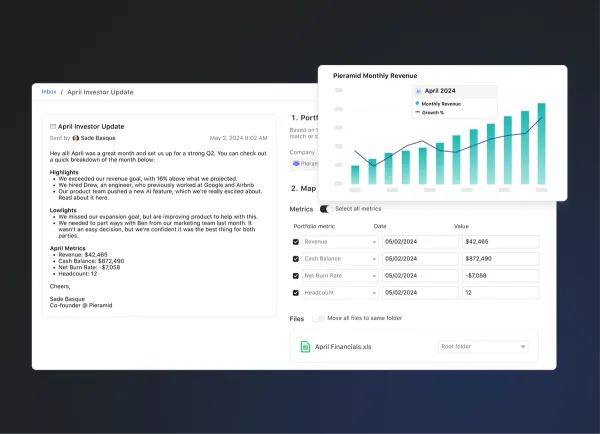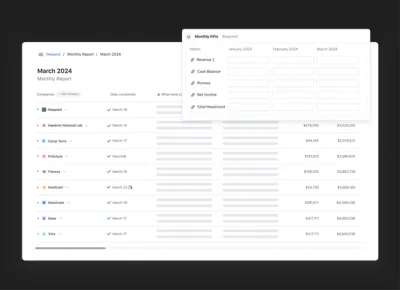
In the intricate world of venture capital and private equity, liquidation preference is a pivotal concept that dictates financial outcomes during critical junctures like company sales or bankruptcies. Our article delves into the nuances of this key mechanism, exploring how it prioritizes investors' returns over common stockholders and its impact in various low-return scenarios. We'll guide you through the five primary types of liquidation preferences, each with distinct implications for investment returns and company dynamics. Particularly crucial for startups, understanding liquidation preferences is essential for navigating future funding and maintaining financial health. Join us as we unravel the complexities of liquidation preference, a crucial element in balancing the risk-reward equation in business finance.
Liquidation Preference Defined
Liquidation preference is a key term in venture capital and private equity, defining the order and magnitude of payments to investors in events like company sale or bankruptcy. This provision in preferred stock agreements prioritizes the return of capital to investors before any distribution to common stockholders. It's an essential mechanism in venture capital contracts to safeguard invested capital, especially in scenarios yielding low returns.
For example, in a real-life scenario, if a company with a liquidation preference clause is sold, preferred investors are entitled to receive their investment amount before any payouts to common stockholders. This ensures that in a liquidity event such as a company sale, the downside risk to preferred investors is minimized, as they are guaranteed a return on their investment before others. However, if preferred stock converts to common stock in a qualified initial public offering (IPO), the liquidation preference often ceases to apply, aligning the interests of all shareholders.
The Importance of Liquidation Preference
The importance of liquidation preference in venture capital and private equity cannot be overstated. Primarily, it provides financial security to investors by ensuring they recover their investment before any payouts to common shareholders in the event of a liquidation, such as a company sale or bankruptcy. This makes investing in high-risk ventures more attractive, as it reduces the potential losses in scenarios where the company does not perform as expected.
Additionally, liquidation preference can influence company strategies and decision-making. It can impact negotiations during funding rounds, as terms can significantly affect how proceeds are divided in a sale or liquidation event. Moreover, for entrepreneurs and common shareholders, understanding liquidation preference is crucial in assessing how much control and financial benefit they retain in their company after external funding.
In essence, liquidation preference is a key element that balances the risk and reward equation for both investors and company founders, making it an indispensable part of venture capital and private equity deals.
Related resource: 5 Ways to Make Investor Communication Better
The 5 Primary Types of Liquidation Preference
As we delve deeper into liquidation preferences, it's important to understand that there isn't a one-size-fits-all approach. This financial tool comes in various forms, each with its unique characteristics and implications for investors and company founders. We will explore five primary types: Single or Multiple, Non-Participating and Participating, Participation Caps, Seniority Structures, and Dividend Preferences. Each type represents a different way of structuring payouts in liquidation events, offering distinct advantages and considerations. In the following sections, we'll break down these categories, providing clarity on how each operates and their potential impact on investment returns and company dynamics.
1.) Single or Multiple
Single and Multiple liquidation preferences are two common structures used in venture capital and private equity to determine the payout order and amount to investors in a company's liquidation event.
A Single liquidation preference, typically set at 1x the original investment amount, means that an investor with this preference gets paid back their full investment amount before any shareholders lower in the priority stack receive their payouts. This is the most common type of liquidation preference and is seen as a standard protective measure for investors.
A Multiple liquidation preference, on the other hand, is less common and involves a multiple greater than 1x, such as 2x or 3x. In this scenario, an investor with, for instance, a 2x liquidation preference would be paid back double their original investment amount before any other shareholders receive anything. While it offers greater protection for the investor, high multiple liquidation preferences can become contentious in subsequent funding rounds and may negatively impact the ability of founders and employees to see a return, as these groups are pushed lower in the preference stack.
For an example of a Single liquidation preference, consider a scenario where an investor invests $1 million for a 25% stake in a company that is later sold for $2 million. With a 1.0x Non-Participating Liquidation Preference, the investor would receive $1 million from their 1.0x preference, ensuring the recovery of their full investment. In this case, the remaining $1 million would be distributed to the common shareholders.
An example of a Multiple liquidation preference is more complex and less common. For instance, if an investor has a 2x liquidation preference and invests the same amount in a company with the same sale price, they would be entitled to receive double their investment (i.e., $2 million) before any payouts to common shareholders. However, in this example, since the sale price is only $2 million, there would be nothing left for common shareholders after fulfilling the investor's 2x liquidation preference. This highlights how a multiple liquidation preference can significantly impact the distribution of proceeds, potentially leaving common shareholders with little to no return.
2.) Non-Participating and Participating
Non-Participating Liquidation Preference allows investors to choose between receiving their initial investment back (usually at a 1x multiple) or converting their preferred shares to common shares and receiving a proportionate share of the sale proceeds. In other words, they can either get their initial investment back or participate in the profits like common shareholders, but not both.
Participating Liquidation Preference, on the other hand, enables investors to receive their initial investment back (again, usually at a 1x multiple) and then also participate in the remaining distribution of proceeds as if their shares were common stock. This means they first recover their investment and then also get a share of any remaining proceeds.
For example, if a company with a Non-Participating 1x Liquidation Preference is sold, and an investor's initial investment was $1 million, they would have the choice to either take back their $1 million (if the sale proceeds allow) or convert their shares to common and take their share of the total sale proceeds. In contrast, with a Participating 1x Liquidation Preference in the same scenario, the investor would first take their $1 million and then also receive a portion of the remaining proceeds as if they were a common shareholder.
3) Participation Caps
Participation Caps in liquidation preference set a limit to how much preferred investors can receive in liquidation events, essentially capping their payout. This cap is usually expressed as a multiple of the original investment.
For instance, in a capped participation preference scenario, an investor may have a cap set at 2x or 3x the original investment. This means they will participate in the liquidation proceeds on a pro-rata basis until their total proceeds reach this set multiple. After reaching this cap, they no longer receive additional proceeds, and the remaining funds are distributed to other shareholders.
For example, suppose a venture capital firm invests $5 million in a company with a capped participating preference set at a 3x cap. If the company is later sold or liquidated, the VC's payout preference would be capped at $15 million (3 times the $5 million investment). In this scenario, the investor will first receive their $5 million preference and then share in the remaining proceeds until their total proceeds equal $20 million. After reaching this cap, the remaining funds are distributed to other shareholders, such as co-founders.
This cap serves as a safeguard to prevent preferred shareholders from over-dominating the payout distribution, thus ensuring a fairer distribution among all shareholders, including founders and common shareholders.
4) Seniority Structures
Seniority Structures in liquidation preference determine the order in which investors are paid in the event of a company's liquidation based on the seniority of their investment. This structure can vary, but generally, it prioritizes the most recent investors over earlier ones.
A common form of seniority structure is Standard Seniority, where the liquidation preferences are honored in reverse order, starting with the most recent investment round. For instance, Series B investors would receive their liquidation preferences before Series A investors. Another form is Pari Passu Seniority, where all investors are treated equally regardless of their investment round, meaning they all receive a part of the liquidation proceeds proportionate to their initial investment. Lastly, there's Tiered Seniority, a hybrid model where investors are grouped within their funding rounds, and within each tier, payouts follow the pari passu model.
An example of how seniority structures work can be illustrated as follows. Assume a company has received investments from seed investors who committed $2 million and Series A investors who committed $1 million, each with a 1x liquidation preference. If the company's assets after a sale amount to only $1 million, according to Standard Seniority, the Series A investors would receive the entire $1 million, leaving the seed investors with nothing. This example demonstrates the "last in, first out" principle, where investors who funded the business in its later stages, perhaps during more challenging times, are paid out first.
5) Dividend Preferences
Dividend Preferences refers to the rights of preferred stockholders to receive specific dividends before common stockholders. These dividends are usually set at a fixed amount or rate and are prioritized over dividends to common shareholders, especially in liquidity events. This clause ensures that preferred stockholders not only get priority in the distribution of dividends but also in the accumulation of those dividends if the underlying asset faces a liquidity event.
For example, participating preferred stockholders with Dividend Preferences might be entitled to a set dividend rate, in addition to having a liquidation preference. In a scenario with a 2x liquidation preference, these stockholders would receive twice the amount of capital they initially invested in the company in the event of a liquidity event, provided there are sufficient funds to meet this requirement. Additionally, they have the right to convert their participating preferred shares into common stock if they choose to do so.
This type of preference is significant in providing an extra layer of financial security to preferred stockholders, ensuring they receive their due dividends in addition to any capital returns in the event of a company's sale, merger, or other liquidity events.
How Liquidation Preference Works
As we've explored various types of liquidation preferences, it's clear that they play a critical role in shaping the outcomes for investors and company founders in liquidity events. Essentially, liquidation preference determines the order and amount in which different shareholders are paid in the event of a company sale, merger, or bankruptcy. This system prioritizes the returns for preferred shareholders, often venture capitalists, over common shareholders, such as employees and founders. The preference can be structured in multiple ways, each having distinct implications on the distribution of proceeds from a liquidation event. Understanding how these preferences work is key to grasping the dynamics of venture capital and private equity investments, as they significantly influence the financial returns for all parties involved in a company's journey.
The Best Liquidation Preference For Startups
Determining the best liquidation preference for startups depends on various factors including the company's stage, the nature of the investment, and the interests of both investors and founders. Generally, a simpler liquidation preference, like a 1x non-participating preference, is often considered favorable for startups. This type ensures investors get their investment back in a liquidation event, but doesn't excessively dilute the payouts to founders and other common shareholders.
A 1x non-participating preference is balanced, offering protection to investors without overly penalizing common shareholders. This type of preference is vital for early-stage startups where future funding rounds might require more attractive terms to new investors, and excessive liquidation preferences can make follow-on funding difficult or unattractive.
However, the "best" preference can vary. For more established startups with a clearer path to profitability or exit, different structures might be more appropriate. It's crucial for startups to consider how liquidation preferences might impact future funding and the company's overall financial health. Consulting with financial and legal experts is advisable to determine the most suitable liquidation preference for a startup's specific circumstances.
Related resource: What Are Convertible Notes and Why Are They Used?
Visible: The Ultimate Resource for Founders
We've explored liquidation preference, a key aspect of venture capital and private equity that shapes the financial outcomes in events like company sales or bankruptcies. This mechanism ensures that investors' capital is prioritized over common stockholders, especially in low-return scenarios. We've examined the five primary types of liquidation preferences – Single or Multiple, Non-Participating and Participating, Participation Caps, Seniority Structures, and Dividend Preferences, each with its implications on investment returns and company dynamics. The choice of liquidation preference is crucial for startups, influencing future funding and overall financial health. Overall, liquidation preference is an essential tool in balancing risk and reward for investors and founders in the complex world of business finance.
Let Visible help you succeed- raise capital, update investors, and engage your team from a single platform. Try Visible free for 14 days.
Related resource: Navigating the World of QSBS: Tax Benefits and Eligibility Criteria Explained




